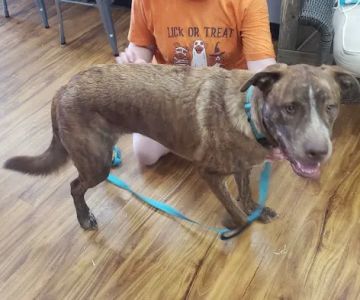Natural Remedies for Dog Hot Spots: Effective Solutions to Soothe Your Pet
If you're a pet owner, you may have experienced the frustration of dealing with dog hot spots. These painful, inflamed areas on your dog’s skin can occur suddenly and seem to make your pet incredibly uncomfortable. As a dog owner, I know how distressing it can be to watch your pet suffer from itching, irritation, and raw skin. Fortunately, there are natural remedies that can help treat dog hot spots and provide your furry friend with relief.
What Are Dog Hot Spots?
Before diving into remedies, it’s important to understand what dog hot spots are. Hot spots, also known as acute moist dermatitis, are areas of inflamed, irritated skin that can become infected. They’re often caused by excessive licking, scratching, or biting, which creates a warm, moist environment perfect for bacteria to thrive. Hot spots can appear anywhere on your dog’s body, but they are most commonly found on the head, neck, and back.
In my experience, hot spots can develop quickly, sometimes from something as simple as an allergic reaction, a flea bite, or even stress. While they can be uncomfortable and irritating for your dog, the good news is that they can often be treated at home with natural remedies. Here, I’ll share some effective methods to help heal your dog’s skin naturally and prevent hot spots from coming back.
1. Aloe Vera for Cooling and Healing
Aloe vera is well-known for its soothing and healing properties, and it works wonders on hot spots. When applied topically, aloe vera gel can provide immediate relief for irritated skin, reducing inflammation and pain. I’ve personally used aloe vera on my dog’s hot spots, and it works like magic. Here’s how you can use it:
- Make sure to use 100% pure aloe vera gel, free from added chemicals or fragrances.
- Apply a thin layer of aloe vera gel to the affected area. Be gentle and avoid rubbing the skin too hard.
- Allow the aloe vera to dry naturally, and repeat the application twice daily.
Aloe vera not only helps reduce itching but also promotes the healing of damaged skin, allowing your dog’s hot spot to recover faster. If you don’t have an aloe vera plant, store-bought aloe gel is an excellent alternative.
2. Apple Cider Vinegar for Antibacterial Properties
Apple cider vinegar (ACV) is another powerful, all-natural remedy for treating dog hot spots. Known for its antibacterial and antifungal properties, ACV can help cleanse the affected area and prevent infection. I’ve found ACV to be especially effective when my dog’s hot spots are beginning to show signs of infection. Here’s how to use it:
- Mix equal parts of water and apple cider vinegar in a spray bottle.
- Lightly spray the mixture onto the hot spot, being careful not to spray too much or cause irritation.
- Let the ACV solution sit for a few minutes before gently blotting it with a clean towel.
- Repeat this process once or twice a day until the hot spot starts to heal.
While ACV is an excellent disinfectant, be cautious not to use it if the hot spot is bleeding or has broken open, as the vinegar may cause a stinging sensation. Always test it on a small area first to ensure your dog isn’t sensitive to the solution.
3. Coconut Oil for Moisturization and Healing
Coconut oil is a natural moisturizer that also has anti-inflammatory properties, making it a fantastic option for treating dog hot spots. It can help soothe the skin, reduce redness, and promote healing. I’ve used coconut oil on my dog’s skin for years and have seen remarkable results. Here’s how to use it:
- Use organic, unrefined coconut oil to ensure the highest quality.
- Warm up a small amount of coconut oil between your fingers and gently massage it into the hot spot.
- Allow the oil to absorb into the skin. You can leave it on overnight for maximum benefit.
Coconut oil also contains lauric acid, which has antimicrobial properties that can help prevent infections in the hot spot. It’s gentle and safe for most dogs, but if your dog has sensitive skin, do a patch test first.
4. Turmeric to Reduce Inflammation
Turmeric is a powerful anti-inflammatory herb that can help reduce swelling and discomfort caused by hot spots. I’ve used turmeric both internally (in my dog’s food) and externally to treat hot spots. Here’s how to use it:
- Mix turmeric powder with coconut oil to create a paste.
- Apply a small amount of the turmeric paste to the hot spot, gently rubbing it in.
- Leave it on for 15-20 minutes before wiping it away with a damp cloth.
Turmeric’s active ingredient, curcumin, helps reduce inflammation, soothe irritation, and promote healing. However, turmeric can stain, so be cautious when applying it to your dog’s fur, and consider using it in combination with other treatments for best results.
5. Chamomile Tea for Soothing Relief
Chamomile tea is another natural remedy that works wonders for treating dog hot spots. Known for its calming and anti-inflammatory effects, chamomile can help soothe your dog’s skin, reduce swelling, and promote healing. I’ve used chamomile tea both as a topical treatment and as a soothing bath for my dog. Here’s how to use it:
- Brew a strong cup of chamomile tea and let it cool.
- Soak a clean cloth in the tea and apply it to the hot spot for 10-15 minutes.
- You can also use chamomile tea as a rinse after bathing your dog to soothe irritated skin.
Chamomile is safe and gentle, making it a perfect option for sensitive skin. Just be sure to use it once the tea has cooled down to prevent burning your dog’s skin.
6. Preventing Hot Spots from Returning
While treating dog hot spots with natural remedies can provide relief, it’s also important to prevent them from coming back. Keeping your dog’s skin healthy is key to avoiding future flare-ups. Regular grooming, flea prevention, and keeping your dog’s coat clean and dry can help reduce the risk of hot spots.
If your dog tends to lick or scratch excessively, try using a protective collar or a calming collar to discourage this behavior. You should also ensure your dog has a well-balanced diet rich in omega-3 fatty acids, which promote healthy skin and coat. I’ve noticed that a change in diet helped improve my dog’s skin condition and reduced the occurrence of hot spots.











